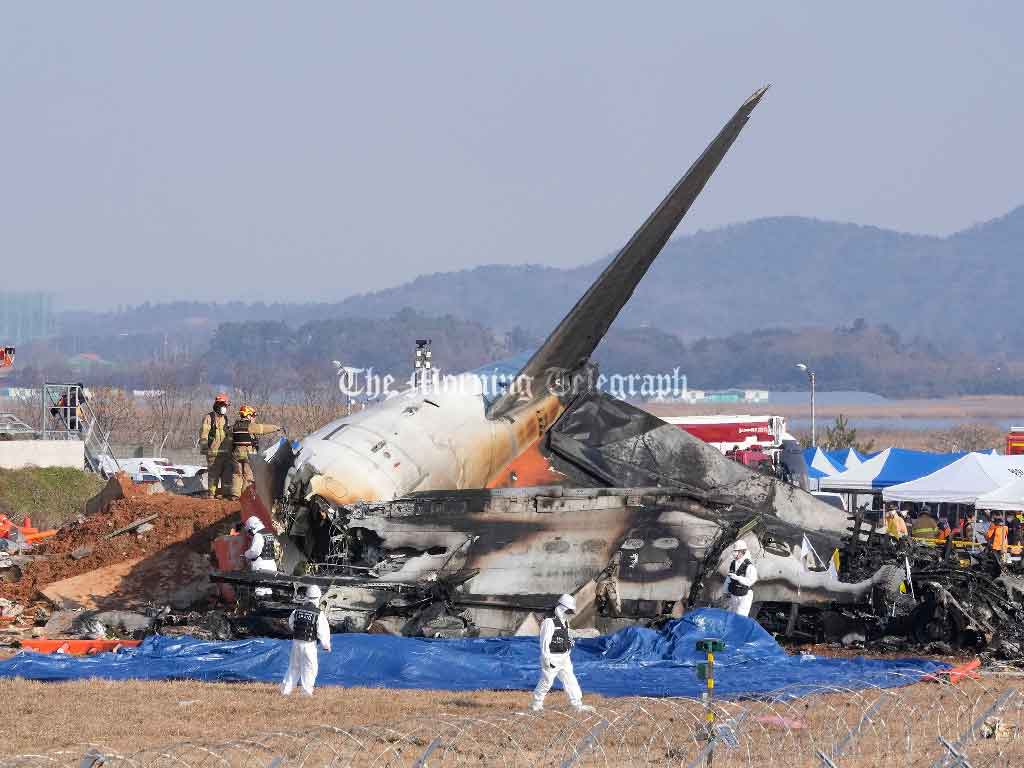
The death toll from the catastrophic Jeju Air plane crash at Muan Airport in South Korea has risen to 124, with rescue efforts ongoing to locate the remaining missing passengers. The incident is now one of the deadliest aviation disasters in South Korea’s history. The crash occurred when the Boeing 737-800, carrying 181 people, skidded off the runway, collided with a concrete wall, and burst into flames.
The ill-fated flight had been returning from Bangkok and attempted to land at Muan Airport at 9:03 a.m. local time on Sunday. Initial investigations suggest that a failure of the front landing gear, coupled with a potential bird strike, may have led to the disaster. The airport’s control tower had reportedly issued a bird-strike warning moments before the crash and authorized the pilot to land at an alternate runway. However, the plane’s landing gear failed to deploy, causing it to skid uncontrollably off the runway and into a concrete barrier.
Emergency services, including 32 fire trucks, helicopters, and over 1,500 personnel, raced to the scene to extinguish the fire and rescue survivors. Thick black smoke billowed from the wreckage, which was almost completely destroyed except for the tail assembly. Despite the massive response, only two crew members have been rescued alive and are reported to be in stable condition.
Among the victims, 57 were women, 54 were men, and 13 remain unidentified. Local health officials fear that the death toll could rise further as search operations continue more than 12 hours after the crash.
Transport Ministry officials confirmed that investigators have retrieved the flight data recorder and are still searching for the cockpit voice recorder to help determine the exact sequence of events leading to the tragedy. Preliminary analysis points to potential mechanical failure and pilot distress, exacerbated by environmental challenges.
Jeju Air issued a public apology, expressing its condolences to the bereaved families and committing to full cooperation with government investigations. The airline confirmed that the aircraft underwent routine maintenance checks and showed no prior signs of malfunction.
Boeing, the aircraft manufacturer, released a statement offering condolences and pledged to provide technical assistance in the investigation.
The crash has drawn comparisons to other major aviation disasters, including the 1997 Korean Airlines crash in Guam that claimed 228 lives. The tragedy also comes amid a politically volatile time for South Korea, with the country grappling with a crisis following the impeachment of Acting President Han Duck-soo. Deputy Prime Minister Choi Sang-mok, now serving as the interim leader, has ordered a comprehensive response to the disaster, including expedited rescue efforts and support for affected families.
The Muan Airport crash has left the nation in mourning and raises pressing questions about aviation safety, emergency preparedness, and the challenges of aging aircraft in a high-demand industry.




